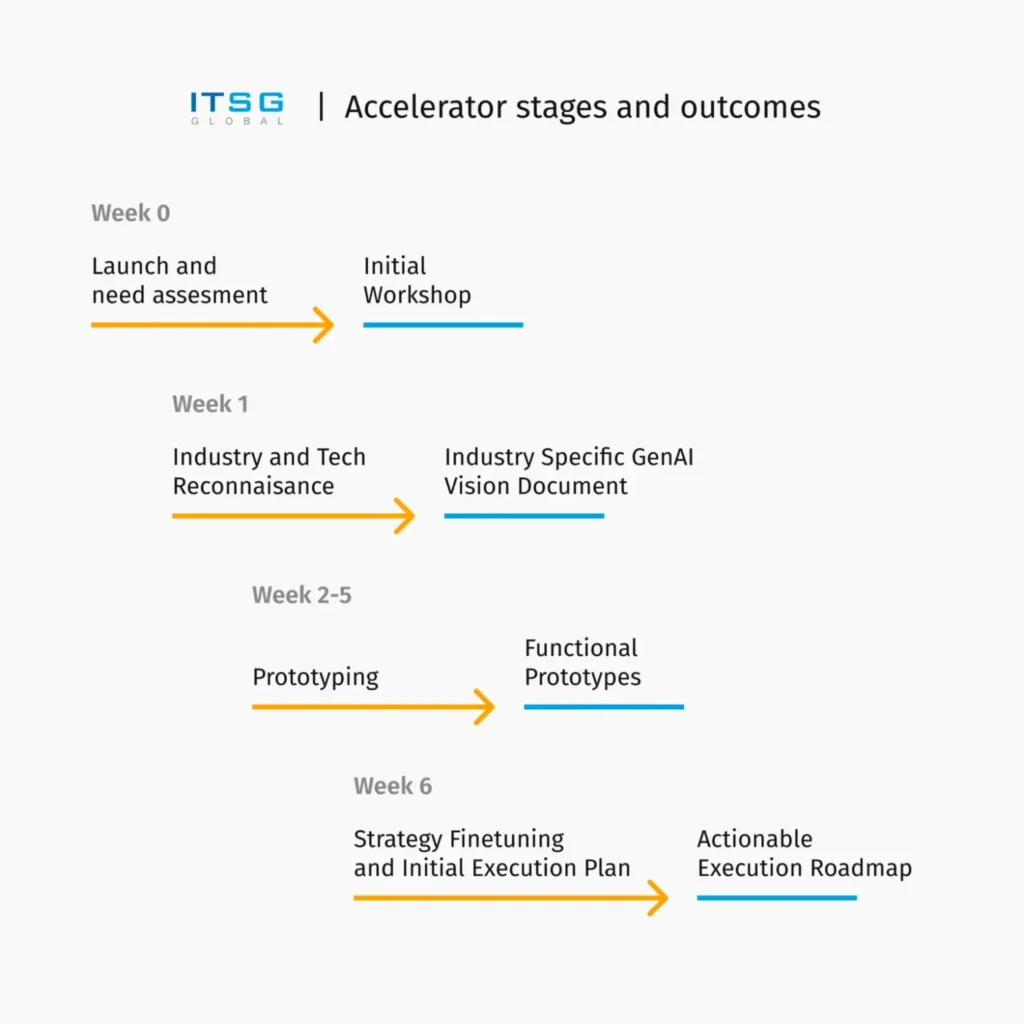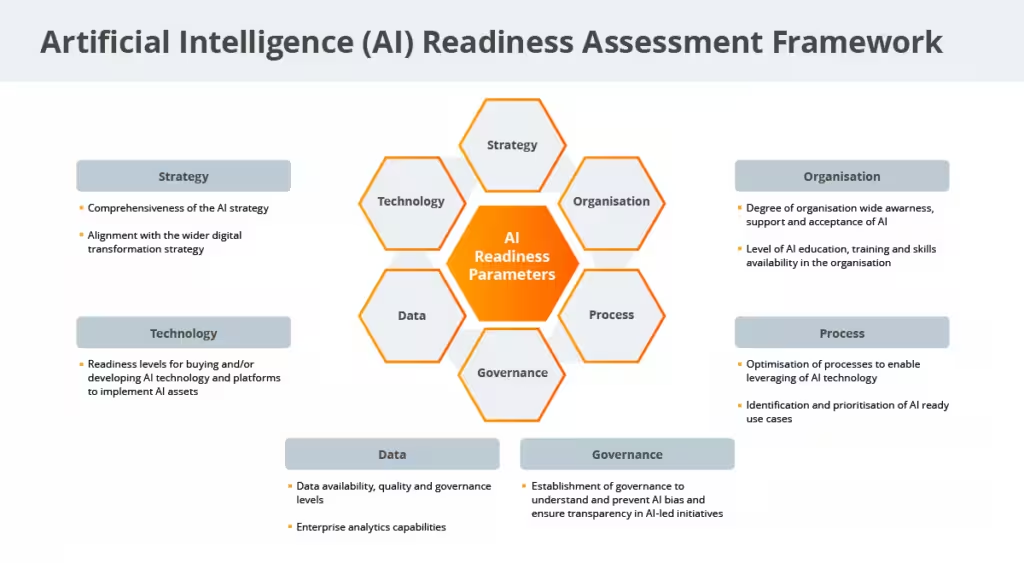$99 or $99,000: How much does AI implementation really cost?
Quick insights:
• AI implementation costs range from $5,000 to over $1 million
• Hidden costs include training, infrastructure and data preparation
• Early AI adopters gain significant competitive advantages
AI and its price tag
How much does implementing AI actually cost? It’s a question that’s both simple to ask and complex to answer. The reality is, there’s no fixed price tag for AI implementation. Costs can vary dramatically based on a company’s needs, goals, and existing infrastructure. For some, it might be a modest investment; for others, a significant financial commitment. This uncertainty can be challenging for businesses trying to budget for AI adoption.
Tech leaders are already envisioning AI’s impact. Microsoft CEO Satya Nadella predicts AI will become “the primary way we interact with computers” [12], pointing to a future of more advanced digital assistants. However, before embracing this perspective, it’s crucial to understand the financial implications. Whether planning a small project or a company-wide implementation, knowing the potential costs is key to making informed decisions about AI adoption.
AI implementation spectrum
AI implementation costs vary widely depending on the chosen approach. Off-the-shelf solutions offer a quicker, more cost-effective route, while custom AI solutions provide tailored capabilities, but at a higher price point [8]. Let’s break down the spectrum.
For simple AI applications like basic chatbots, costs can range from $5,000 to $20,000. These solutions are ideal for businesses looking to dip their toes into AI without breaking the bank. Medium complexity solutions, such as custom machine learning models, typically fall between $30,000 and $100,000. These might include predictive analytics tools or more advanced customer service AI. On the high end, advanced AI systems used in autonomous vehicles or advanced robotics can exceed $200,000, potentially reaching $1 million or more [7].
The choice between off-the-shelf and custom solutions depends on your specific needs. Off-the-shelf options are generally less expensive and faster to deploy, making them suitable for broad use cases. For instance, a small e-commerce business might opt for a pre-built AI-powered recommendation engine to enhance customer experience.
Custom AI solutions, while more costly and time-consuming to implement, offer high customization and seamless data integration, potentially providing greater long-term value for specialized applications [9]. A large financial company, for example, might invest in a custom AI system for fraud detection that integrates seamlessly with their existing infrastructure. Such investment requires a larger budget upfront, but when handled properly, it’s bound to pay off in the future.
The hidden costs beyond the software
When budgeting for AI implementation, it’s crucial to look beyond the initial software costs. Hidden expenses can significantly impact the total investment, often catching businesses off guard.
What’s perhaps the most important is balancing the costs and speed. While faster implementation can lead to quicker benefits, it may also increase costs due to the need for additional resources. Careful planning and realistic expectations are essential for optimizing this balance. A methodical approach, starting with smaller, high-impact projects and scaling up based on results, can help manage both costs and timelines effectively [1].
Additionally, businesses should consider their implementation environment. It’s clear that new tools must be carefully chosen, but equal attention should be paid to their location. Infrastructure costs include data storage, processing power, and network capabilities. On-premises solutions can be costly, with servers alone potentially exceeding $10,000 [5]. Cloud-based solutions, on the other hand, offer more flexibility, but costs can escalate quickly based on usage [2].
Another frequently overlooked aspect is training. Despite being expected to use AI in their daily work, many employees receive insufficient guidance [11]. Training ensures your team understands the tools and uses them to their full potential. At the same time, employees working directly with the tool will have the most insight on how to use it and which tools are relevant for them, making them crucial to the decision-making process.
How some of the hidden costs might look in practice? Consider the case of a mid-sized company implementing an AI-driven diagnostic tool. While the initial software cost was $150,000, they found themselves investing an additional $100,000 in infrastructure upgrades and $50,000 in staff training [10]. By accounting for these hidden costs upfront, businesses can avoid unexpected financial strain and set realistic expectations.
Factors shaping the AI costs
The hidden costs of AI implementation, while significant, are just one piece of the puzzle. To fully understand the financial implications of adopting AI, we must look at the factors that shape these expenses.
Industry demands play a crucial role in determining AI costs. Healthcare and finance, with their complex regulations and data-intensive operations, often face higher costs [4]. Think of a large hospital system implementing an AI-driven diagnostic tool. It must balance the costs of privacy protection and the integration with, at times very complex, health records. In contrast, the retail sector faces fewer difficulties. AI-powered marketing and customer service technologies have been developing for years [14]. The availability of ready-made solutions makes the implementation costs significantly lower.
Company size and resources also impact AI adoption strategies. Larger enterprises often have the luxury of investing in custom AI solutions tailored to their specific needs. Smaller businesses, however, might find more value in cost-effective, off-the-shelf options. This disparity in approach contributes to the booming AI consulting market [15].
Another key consideration is the state of the existing IT processes. AI tools by nature are supposed to integrate with current workflows, so companies with well-structured IT systems reduce overall implementation costs. A company with outdated systems, for instance, might need to invest heavily in infrastructure upgrades before even beginning their AI implementation. On top of that, businesses should account for the volume of data AI will be processing. The more data, the higher the costs. That’s why careful examination of internal systems and correct data prioritization are so vital.
The competitive edge of early adoption
The financial complexity might discourage businesses from implementing new technologies, but inaction isn’t without its cost. Early adopters of AI often gain a competitive edge, leading to increased market share. By using AI for innovation and efficiency, these companies can outpace competitors who adopt it later. This is particularly evident in rapidly evolving sectors like technology and finance.
Looking ahead, AI is projected to contribute up to $12 trillion to the global economy by 2030. Researchers suggest that supply chain optimization or customer personalization will be the most impacted [3]. Industries such as healthcare, finance, and retail are particularly likely to benefit from AI advancements, particularly in terms of improved efficiency and enhanced customer experiences. Lack of investment means staying behind.
Balancing speed and cost in AI implementation
Implementation times and costs vary based on the complexity and type of AI project. Simple solutions like chatbots and virtual assistants are quicker and cheaper to implement, often taking a few weeks to a couple of months [10]. Complex solutions such as AI-driven drug discovery or advanced data analytics require significant time and investment, potentially spanning several months to over a year [4].
Balancing speed and cost are crucial. While faster implementation can lead to quicker benefits, it may also increase costs due to the need for additional resources. Careful planning and realistic expectations are essential for optimizing this balance. A phased approach, starting with smaller, high-impact projects and scaling up based on results, can help manage both costs and timelines effectively [1].
Strategies for cost optimization in AI projects
While managing AI implementation expenses, organizations need to adopt a balanced approach. The following strategies offer a comprehensive framework for optimizing AI costs without compromising on quality or potential impact.
Start small and scale
Beginning with pilot projects allows organizations to test AI applications and prove their value before committing to large-scale implementations. This enables learning and adjustment without the burden of substantial upfront costs. A company can first introduce an AI-powered chatbots for customer support. After seeing the results, e.g. a significant reduction in support tickets, they can expand to more complex applications in product development or sales forecasting.
Invest in data quality
High-quality data is the foundation of successful AI initiatives. Delegating resources to data cleaning and preparation improves AI model performance and reduces long-term costs associated with poor data quality [4]. The entire process of preparing data for AI integration can amount even to $250 million for a mid-size company [10]. As this is a complex initiative, it might be worth reaching out to professionals dealing with modernization of legacy systems, who can provide you with an initial breakdown of costs and outline each consecutive step [13]. Such an upfront investment greatly improves the accuracy and effectiveness of AI models, leading to better ROI in the long run.
Regularly review and optimize
Continuous monitoring of AI system performance and costs is essential. Regular reviews can identify areas for optimization and ensure ongoing value from AI investments [2]. This iterative approach helps in fine-tuning AI systems for maximum efficiency and cost-effectiveness. A quarterly review process reduces unnecessary maintenance activities and consequently improves effectiveness within the first year [9].
Test drive AI for your business
Creating a proof of concept (POC) lets organizations experiment with AI applications adjusted to their specific needs [6]. This smart, low-risk approach focuses on company-specific problems and datasets, helping businesses avoid costly investments in ill-fitting solutions. The prototyping process can take as little as a couple of weeks, providing visible results with minimal expenses. Programs like ITSG’s very own Generative AI Accelerator can guide you through this process, bridging the gap between AI potential and practical business value [16].

Making informed decisions in AI investment
The cost of AI implementation varies widely. It ranges from modest investments in off-the-shelf solutions to substantial commitments for custom, complex systems. Yet, the potential impact is undeniable. To repeat after, Marc Benioff, CEO of Salesforce, AI is “the most important technology of any lifetime” [12]. While initial investments may seem overwhelming, the cost of inaction is often higher.
For executives considering AI adoption, the path forward is clear. Start with a comprehensive assessment of your business needs, infrastructure, and long-term goals. Weigh both immediate expenses and potential future gains. Success lies not in following the hype, but in thorough planning and realistic expectations.
If you’re ready to move forward with AI implementation but need expert advice, ITSG can help. Schedule a free consultation with our AI specialists. We’ll work with you to assess your needs, identify high-impact projects, and develop a tailored strategy that aligns with your business goals.





